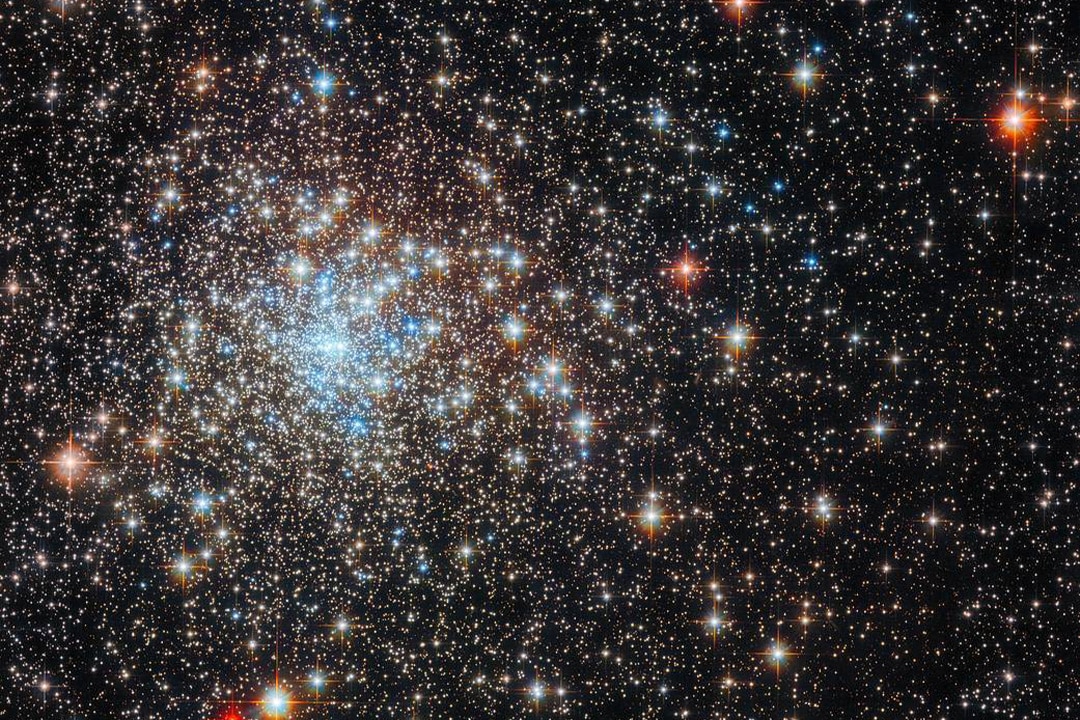Create a free profile to get unlimited access to exclusive videos, sweepstakes, and more!
“Celestial Monsters” 10,000 Times the Size of the Sun Existed During Early Universe
They don't make stars like they used to.

As the events of 2006’s Solar Attack (streaming now on Peacock!) unfold, a powerful coronal mass ejection (CME) strikes the Earth. In the process, it destroys a crewed spacecraft, downs a number of crucial satellites, and reduces New Zealand to a boiling pool of molten slag. That would be bad enough on its own, but global climate change has driven atmospheric methane concentrations to 5%, up 0.00017% in the real world.
If we actually had that much methane, we’d be in big trouble without the help of a solar temper tantrum. Methane is about 25 times better at holding onto heat than carbon dioxide, and not even CO2 makes up 5% of the atmosphere. With the help of Solar Attack's CME, the inhabitants of Earth got the unique opportunity to be baked in a planet-scale solar oven.
RELATED: Upcoming Solar Maximum Will Paint The Sky With Northern Lights
Fortunately, that’s not something we really need to worry about, even with the upcoming solar maximum ramping up the number of solar flares and CMEs. However, a new study published in the journal Astronomy & Astrophysics reveals that the weird composition of globular clusters may be the result of being baked by gigantic “monster stars” when the universe was young.
WHAT IS THE RECIPE FOR FRESH-BAKED STAR CLUSTERS?
Globular clusters are the oldest and most massive star clusters in the known universe. They can span tens of light-years and contain millions of stars. There are roughly 180 of them in the Milky Way, each having formed from a molecular cloud of gas and dust. New stars are still being born, but it’s widely believed that the formation of globular clusters has ended. There just isn’t enough freely available gas floating around anymore.
In the early universe, however, that stuff was everywhere, and cluster formation was common. Because clusters form together from the same pile of material and at the same time, we might expect that the stars all share commonalities. They should be roughly the same age and have roughly the same composition. If you mix up a bunch of chocolate chip cookie dough and throw it on a tray, you expect to pull chocolate chip cookies out of the oven. So, it’s weird that when astronomers look at clusters, they find oatmeal raisin and snickerdoodles mixed in.
One of the most enduring mysteries surrounding globular clusters is why the stars don’t all come out uniformly, when they’re made from the same batch of material. Some stars in a cluster will have significantly higher or lower concentrations of oxygen, nitrogen, sodium, and aluminum, and astronomers have been left to wonder where those differences come from.
MONSTER STARS MIX IN NEW MATERIALS
Previous research suggested that the presence of incredibly massive stars, 5,000 to 10,000 times the size of the Sun, during the formation of a globular cluster could explain why some stars get a different mix of material than others. The idea is that massive stars quickly fuse material into increasingly enriched matter, then spread that matter throughout the molecular cloud in a heterogeneous manner, which really just means that they dump a bunch of raisins and macadamia nuts into the stellar cookie dough, but they don’t mix it around uniformly.
Studying monster stars is challenging, because they lived and died a long time ago. Despite having thousands of times the fuel of the Sun, they burn hot and fast, and they die young. The average lifespan of a supermassive star is something like two million years, as compared to the roughly 10-billion-year lifespan of the Sun. If monster stars were responsible for the weird mixing of globular clusters, astronomers would need to peer back billions of years to find out. Enter NASA’s JWST.
The impressive infrared capabilities of the James Webb Space Telescope give it a longer view of the cosmos than any other space-based telescope that came before. Astronomers pointed the telescope at a globular cluster called GN-Z11, located 13.3 billion light-years away. At that distance, we can see the cluster as it was when it was only a few tens of millions of years old.
Astronomers confirmed high proportions of nitrogen in the cluster, which they say could only have been formed in the core of a supermassive star. Which means that the cluster still — “still” from our point of view, the light spent more than 13 billion years getting to us — has an active supermassive star spilling its guts into the mix.
Those monster stars are long-since dead, but they aren’t forgotten. Their influence on the cosmic kitchen can still be felt in the stars cooling on the counter, some of which will survive for trillions of years.
Catch Solar Attack, streaming now on Peacock!














